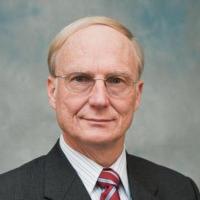SystemX Affiliates: login to view related content.

We are at an extraordinary time in wireless communications. Major evolutions are occurring in WAN, LAN, and PAN. 3GPP has a major project to develop a new 5G air interface, called NR (New Radio), and a 5G core network, called NGCN (NextGen Core Network). IEEE 802.11 has been developing 802.11ax—its most important amendment since 802.11n. The Bluetooth SIG has been developing Bluetooth 5. The lines between these air interfaces are being blurred with operators that traditionally use licensed spectrum augmenting their networks with 802.11, and, more recently, with the development of LAA (License Assisted Access) and MulteFire, variants of LTE, operating in unlicensed spectrum. The rapid growth of data traffic and 5G developments are putting pressure on countries to identify and allocate additional licensed spectrum such as 600 MHz, 3.4-3.6 GHz, and 4.4-4.8 GHz. In the US, the FCC recently announced that the allocation of mmWave spectrum: a total of 3.85 GHz of licensed spectrum at 28, 37, and 39 GHz and an additional 7 GHz of unlicensed spectrum resulting in 67-71 GHz being available. Since spectrum cannot always be cleared of existing users, more sophisticated approaches to spectrum sharing are being developed, such as the SAS-based approached being used for 3.5 GHz in the US. For years, the goal has been to drive to higher peak data rates. In the early days of 3G—less than 20 years ago—our peak mobile data speeds were the few hundred kilobits per second. Today, as these peak speeds have reached 1 Gbps, the focus is turning towards providing better service through significantly higher minimum data rates. IoT is causing the optimization of existing air interfaces, leading to eMTC and 802.11ah; the development of specialized air interfaces such NB-IoT; and the development of special IoT capabilities in 5G. The specialized needs of the automobile industry are leading to other optimizations such as the V2X work in 3GPP. Service layers, such as oneM2M, are being developed to isolate applications from communications and to provide a common management platform. This presentation will examine and provide a perspective on developments and technologies at this extraordinary time in communications.
Dr. Edward G. Tiedemann, Jr. is a QUALCOMM Fellow and a Senior Vice President of Engineering at QUALCOMM. He leads QUALCOMM’s worldwide standardization and industry organization activities. Dr. Tiedemann was instrumental in the design and development of the TIA/EIA/IS-95 CDMA system, also called cdmaOne™. He led QUALCOMM’s and much of the industry’s efforts in the design and development of the third-generation cdma2000® system. For many years, he chaired the 3GPP2 physical layer working group. He led the offline industry group on M2M convergence, which resulted in oneM2M. Dr. Tiedemann holds over 200 US patents and has participated in many papers, conference lectures, and industry panels. Dr. Tiedemann was General Chair of GLOBECOM 2015, one of the IEEE Communications Society’s two flagship conferences.
Prior to becoming involved with terrestrial wireless communications, Dr. Tiedemann was involved with numerous commercial and military satellite systems. From 1977 to 1988, Dr. Tiedemann was at MIT Lincoln Laboratory, where he worked on mmWave satellite communications systems.
Dr. Tiedemann holds the Ph.D. degree from MIT where he worked in the areas of queueing theory and communications networks. He holds the Master of Science degree from Purdue University where he worked on bandwidth efficient modulation. He also holds the Bachelor of Science degree from Virginia Polytechnic Institute and State University (Va Tech).
Dr. Tiedemann is past chairman of the Advisory Board of the College of Engineering at Virginia Polytechnic Institute and State University (Va Tech). Dr. Tiedemann currently sits on the Advisory Board of the Purdue University School of Electrical and Computer Engineering. He is on the Board of Directors of the Open Mobile Alliance, Open Connectivity Foundation, and the MulteFire Alliance. He is on the Board of Overseers of the Peabody-Essex Museum.
In 2008, Dr. Tiedemann received the 3G-CDMA Industry Achievement Award for Industry Leadership from the CDMA Development Group (CDG) for his “long-running contribution to CDMA development and standardization.” He received the Global IT Innovator & Leadership Award from Yonsei University in Korea in 2009, the 2010 Virginia Tech College of Engineering Distinguished Alumni Service Award, and in 2014 became a member of the Virginia Tech Academy of Engineering Excellence. He has received both the Purdue University College of Engineering Distinguished Engineering Alumnus and the Purdue University Outstanding Electrical and Computer Engineer Awards.


